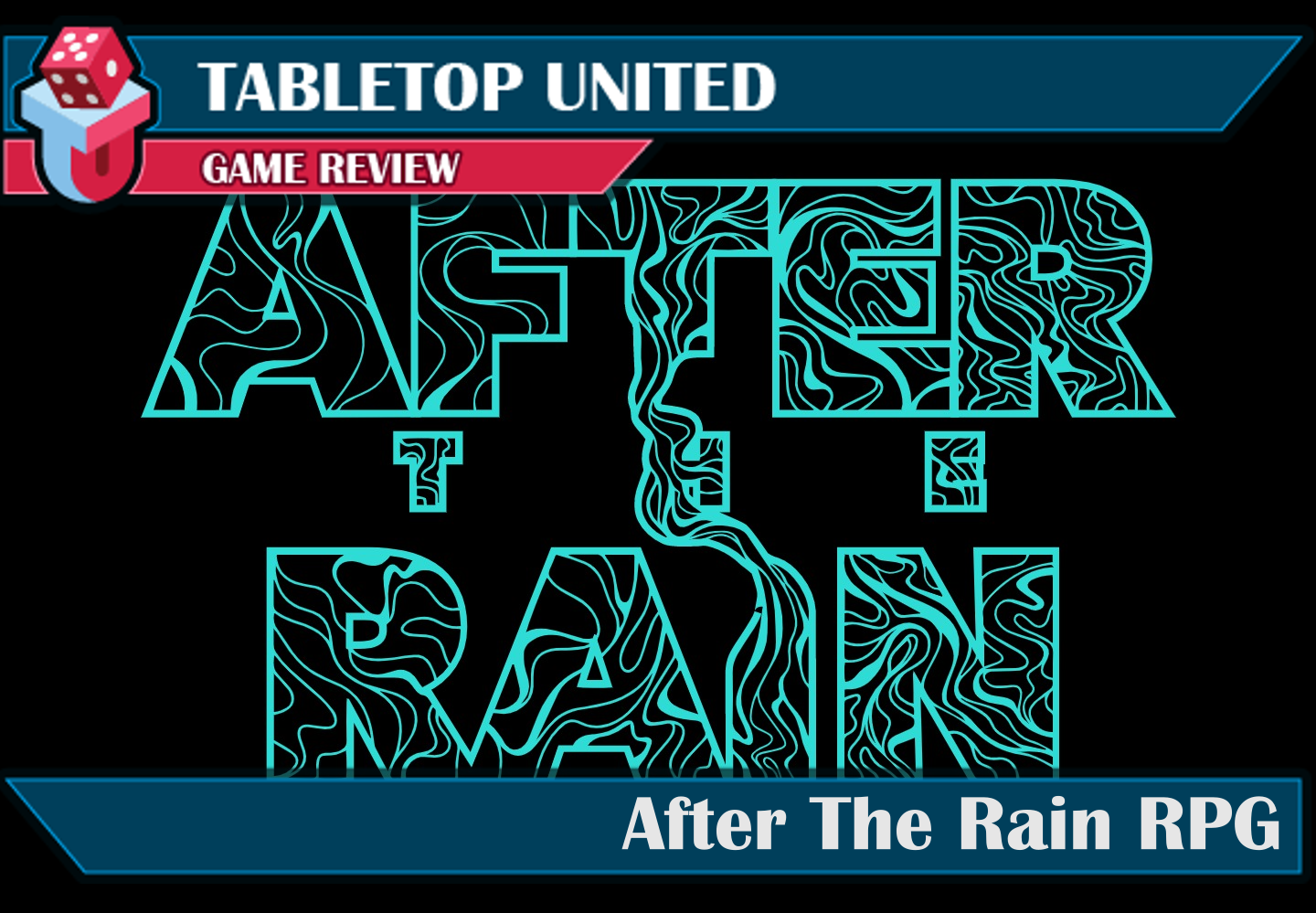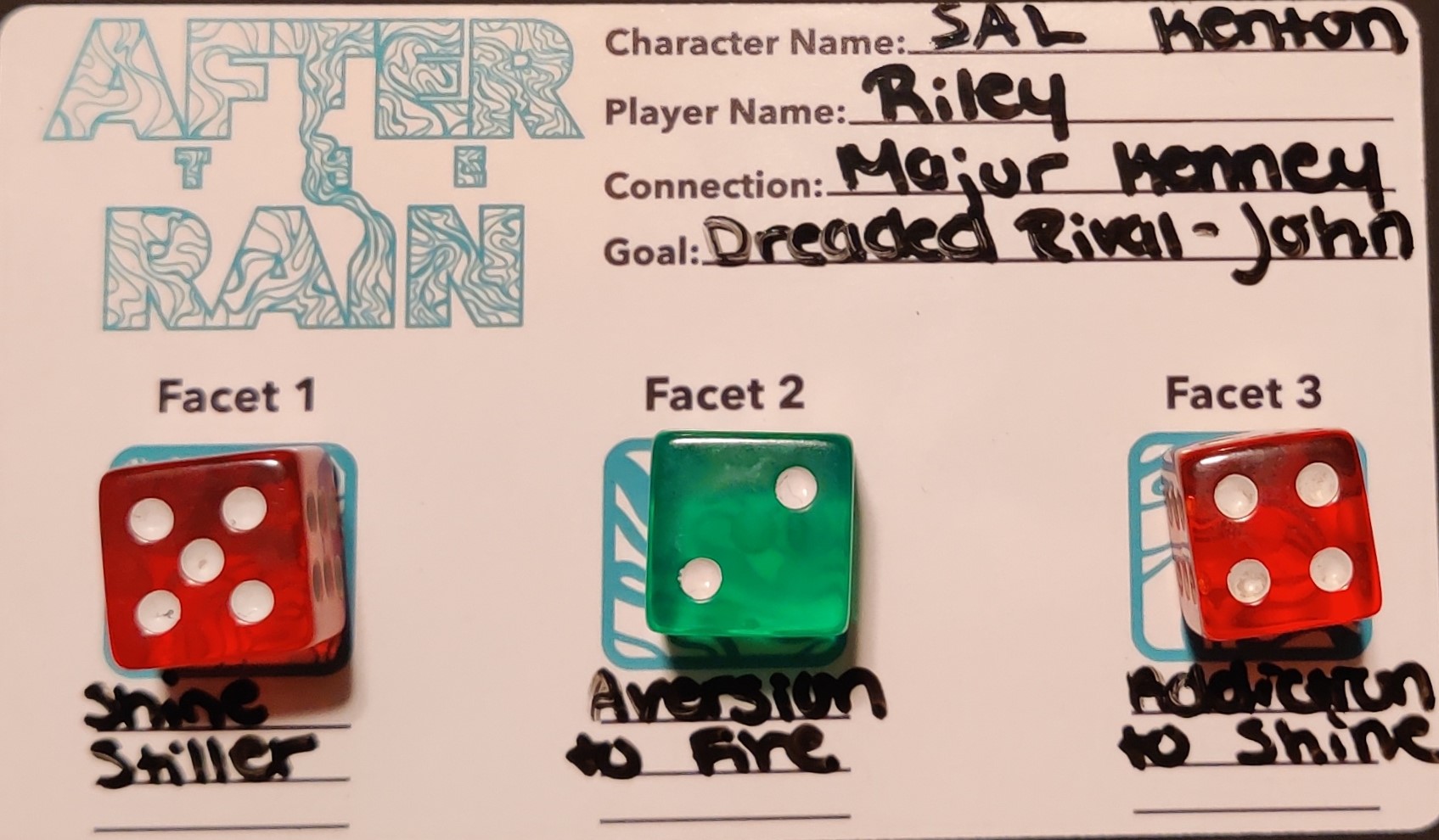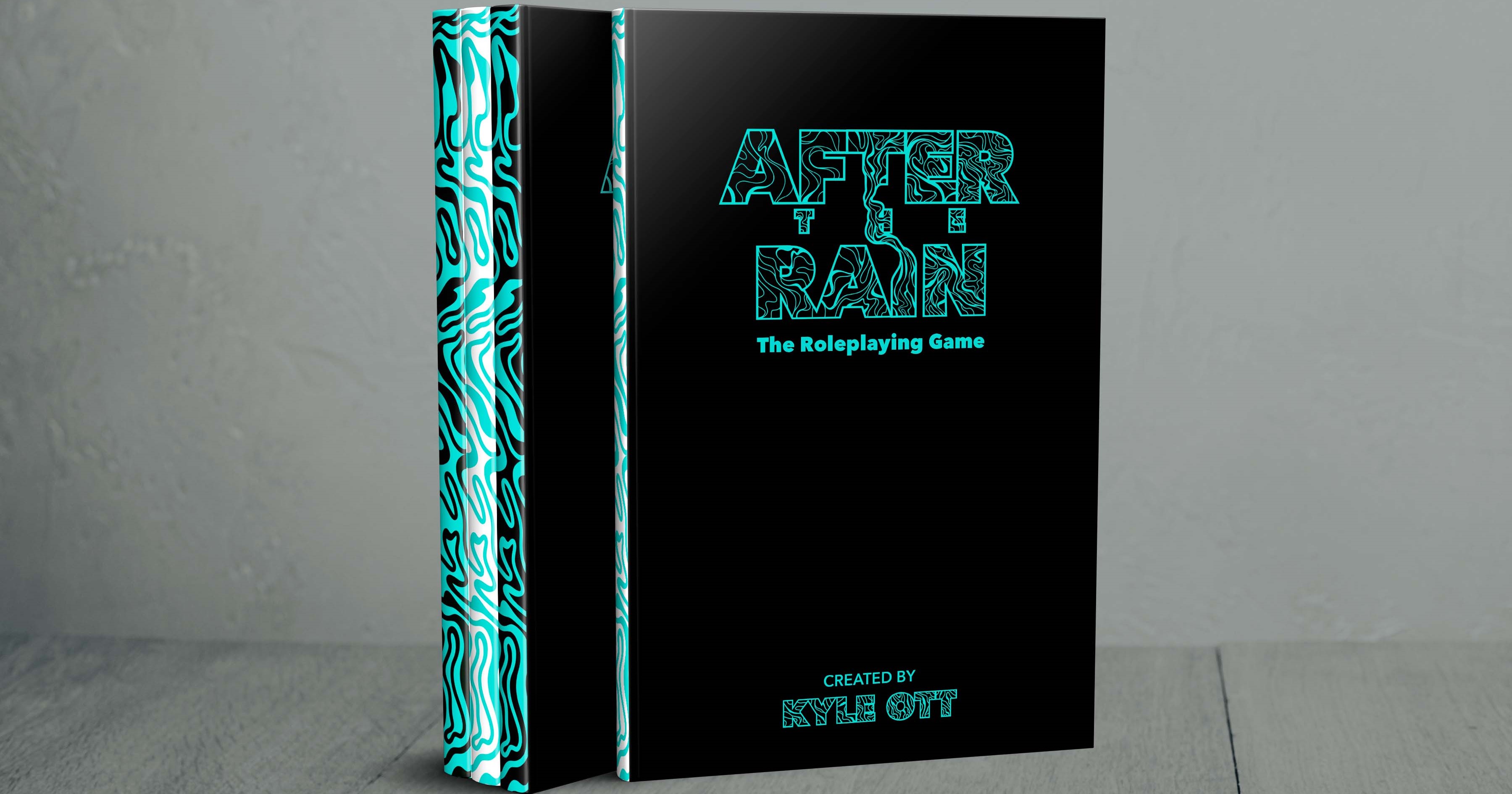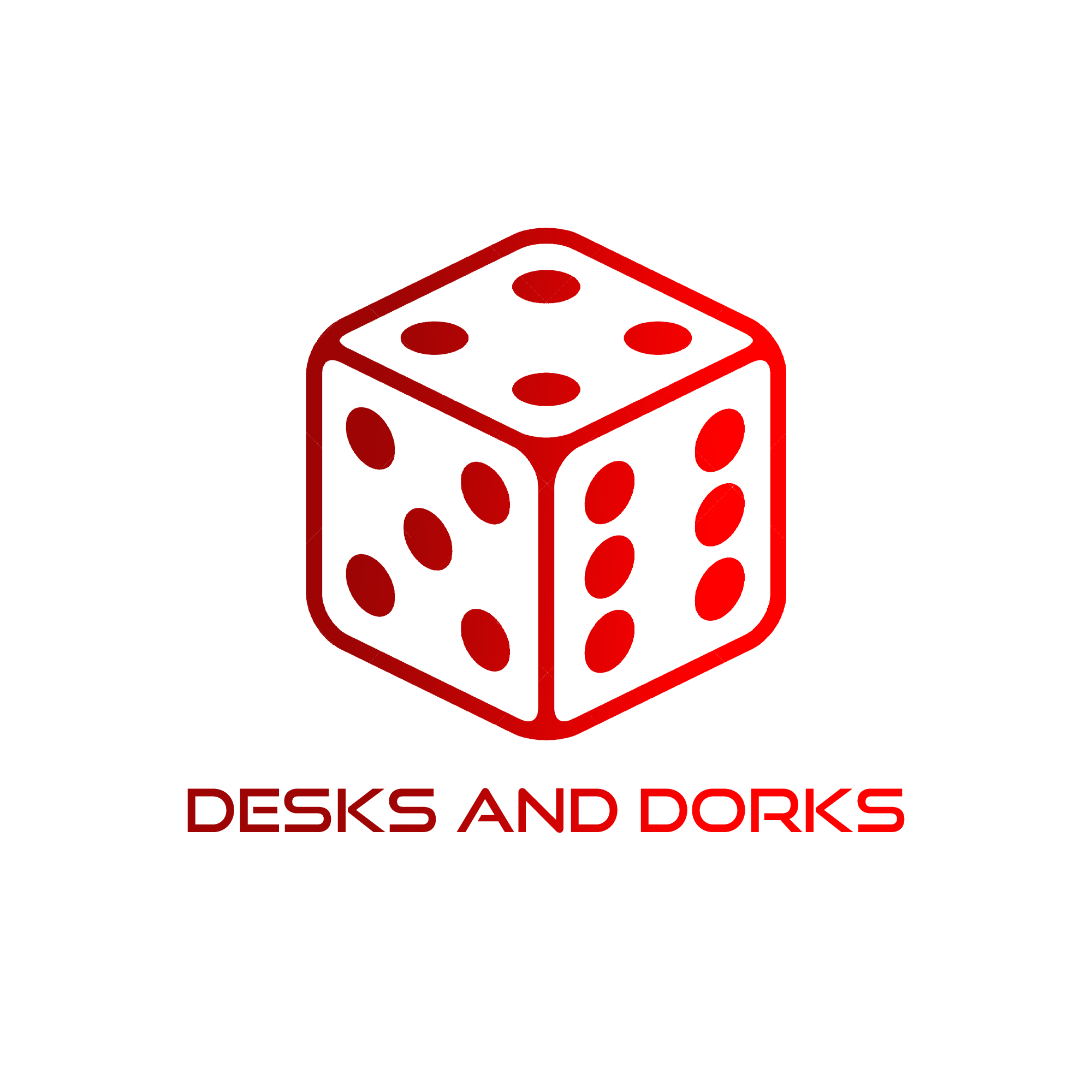
After the Rain: The Roleplaying Game
Designer: Kyle Ott
Artist: Hannah Potts
Publisher: Desks and Dorks
Year Published: 2021
No. of Players: 3+
Ages: not listed
Playing Time: not listed
Main mechanic / Theme: Narrative d6 roles / character devolution (psychological horror)
Rain can be cleansing--it can also wash things away.
Overview
After the Rain by Kyle Ott is a narrative based roleplaying game (RPG). A narrative based RPG is more about the development of the story by all the players around the table and less about the outcome of dice rolls. There are still times when dice are used, and the game master has some control over the storyline, but most of the action is determined by how the story is told during the shared creation.
I received an advanced review copy of After the Rain from the producer. The copy I have has no art and is not in the finished format. I will be reviewing the content of the game and not the art or layout.
After the Rain can be used in any setting desired by the game master and the players. It is generalized and not genre specific. There are three examples at the end of the rulebook using different times in history: the dark ages with the plague, the dustbowl, and present day. In another part of the rulebook, other time settings are also used. You can use a genre and setting that your gaming group already enjoys like fantasy, science-fiction, western, war time, etc.
Each session of After the Rain is designed to be a standalone story/adventure/campaign. The real focus of the game is not the setting, but the characters, and part of the setting is one of the characters—the rain.
Rain is a driving force in the story and is a force of its own. During the story, rain washes away part of the characters’ personality. The process reminds me of Lovecraft’s slow decent into madness as the character forgets about their connections with the world around them. It doesn’t have to be a bad thing, because they could forget about an addiction they have. By the end of the story, the characters will be different than where they started.

Character Creation
Characters in After the Rain are simple compared with many other RPGs. Players and/or the game master creates the characters to be used in the setting to be played. There is no advancement of characters from one session to the next. In fact, there is most likely a devolvement of the character by the end of the game (more on that in mechanics).
The player characters must work together through the different parts of the story being created. To help with that, each character is connected to others in the group. The connection between characters is agreed on by the players involved in the connection between them. They are not one-sided. This does not mean the characters have to be looking to protect each other, but they are in the situation they are in together because of their connections.
Players then determine three Facets of their characters’ personality. Each player controls their character, but it is recommended the Facets be discussed by the group to understand the characters’ personalities and be able to give the Facets more depth by tying them together. This helps because it is the Facets that drive most of the story during play.
Facets can be anything that help define the character. Each of them also has a starting strength determined by a random d6 roll. The higher the score the stronger the Facet.
The characters have a goal they need to complete. The general idea of the goal is created by the game master. Then the players decide how an aspect of the goal affects each of their characters. The example in the book is the characters need to take down a local crime lord who is a dreaded rival. The players would then determine why they need to do this and how the crime lord has affected each character.
Mechanics
The Facet scores added to a d6 roll are the mechanics for After the Rain. With a high total there is success. There is always the possibility of failure with every roll. As the story unfolds during gameplay, the score of the Facets decreases. The connection with that part of the character’s personality becomes less. When a score of a Facet hits zero, that part of the character’s personality is lost and forgotten. If a character started with a drug addiction, when that Facet reaches zero, the character not only loses their addiction, they also don’t remember being addicted. It can also go against the character if a Facet is the strong, loving relationship they have with their partner.
The changes in personality should affect later aspects of the story.
Gameplay
After the Rain in played out in three acts. People familiar with a three-act structure will easily follow the flow. During each act, there may be times a character has to decide to make a check against a Facet to determine the success of their action.
Act I is about setting the scene. The characters are together in a starting location, but they don’t have to stay there. Each player takes a turn as the lead in a scene for the act. They choose who will be in the scene with them and then create the story. The game master is also involved with each scene to create complication, play non-player characters, etc. After each player has played a lead role, act one ends.
Act II is about developing complications for the characters. This act is played by all the players at the same time. They build the story with guidance, or oversight, by the game master. No matter the outcome of the events of the act, at the end each player must choose a Facet they felt played an important part in the story development and reduce its score by one.
Act III has the climax of the story but starts with the twist that puts the characters at a low point. The rain works against the characters to muck up the works by adding a complication to the story. The complication is added by the game master. Each player then gets to be the lead in a scene of the act, again with the choice of what other characters are in the scene with them.
At the conclusion of all three acts the story ends. Not always on a happy note—the characters might not succeed in their goal. No matter the outcome, the characters have changed. At a minimum, the rain has washed part of the characters’ personality away.

Final Thoughts
After the Rain is a simple rule set for mechanics and is strong in the narrative aspects of story creation and storytelling. The devolvement of the characters during play is a definite horror aspect, yet there are ways this could be made into a positive experience. I write horror and my group likes horror, so we jumped in with a horror theme and allowed the characters to deal with the loss of memories and personality.
Our game was an involved and in-depth experience. In past experiences of running narrative-based RPGs at conventions, for less experienced players a high narrative game can be harder to grasp with the openness of story creation without a set of binding rules to regulate it. They can still be involved and create a memorable session, but more experienced players and the game master will probably need to be more involved in their scenes.
After the Rain is being published by Desks and Dorks and is scheduled to be on Kickstarter soon.

About the Author
Daniel Yocom does geeky things at night because his day job won't let him. This dates back to the 1960s through games, books, movies, and stranger things better shared in small groups. He's written hundreds of articles about these topics for his own blog, other websites, and magazines after extensive research along with short stories. His research includes attending conventions, sharing on panels and presentations, and road-tripping with his wife. Join him at guildmastergaming.com.